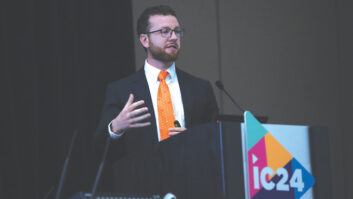There’s little question that 2019 will be remembered as one of the biggest years ever for the concert industry. A raft of economic research supports that assertion and projects that the industry will continue to grow at a substantial pace in the coming years. That trend bodes well for production vendors of all stripes, including sound reinforcement providers, whether they deliver sound for club concerts, stadium extravaganzas or venues somewhere in between.
While individual market estimates vary, financial research sources as a whole point to continued strong consumer interest in concerts and live music experiences in the years to come.
In 2018, PricewaterhouseCoopers’ Global Entertainment and Media Outlook 2018-2022 report predicted that the live concert industry’s total revenue will hit $31 billion by 2022, with $24 billion of that coming from ticket sales. In 2019, market research firm IBISWorld’s Concert & Event Promotion in the U.S. report predicted that the concert industry’s total revenue will rise 1.9 percent annually through 2024, ultimately hitting $36.6 billion that year. And peering even deeper into the crystal ball, in December, The Wall Street Journal placed the live music business at roughly $28 billion today, and forecast that the industry will be taking in $38 billion annually by 2030.
A number of trends have been identified by those making the predictions. It’s no secret that artists have been placing more emphasis on touring and concerts to make money, as low-paying streaming continues to erode once-lucrative physical album sales. At the same time, however, paying audiences have become increasingly attracted to live music, underlining the industry adage, “You can’t download an experience.”
Related: Capturing Concerts for VR, by Alvin Fernald, Aug. 26, 2019
That doesn’t mean technologists won’t try to make that happen, of course. Supersphere, an entertainment production company that specializes in immersive and interactive live broadcast events, has streamed more than 80 events in the past two years, including a string of concerts branded The Audiophile Series that viewers watch using Oculus VR headsets. For music fans who prefer a crowd, Fathom Events broadcasts one-off exclusive live music events to cinemas around the country, often on days that would otherwise draw low attendance for movies. Fans turn out for these events. Fathom Events CEO Ray Nutt told Rolling Stone in December, “In terms of a one-time performance, an event in excess of $750,000 in gross box office, such as the ones we’ve done with BTS and the Elvis Presley ’68 Comeback Special, is a success in our books.”
While music events like these highlight the need for cinemas to install top-shelf audio systems in their facilities, they also confirm something that arena operators already know: that live music shows often perform better at the box office than the original draws the venues were built for. According to The Wall Street Journal, an arena may do well presenting an NBA and NHL game, but it can often rake in double the net income for the night by presenting a concert. This fact has not been lost on venues; arenas that don’t have to accommodate a major-league sports schedule have upwards of 40 more potential dates each year to play with when determining their concert schedules. As result, the WSJ notes, Irving Azoff’s facility company Oak View Group may be planning to spend $3.9 billion to build eight arenas around the country in the next three years, only two of which will house a sports team.
Related: State of the Industry 2019: Sound Reinforcement, by Clive Young, Sep. 24, 2019
While the availability of more arenas to play turns into more potential revenue down the line for national tour sound companies, regional and local audio providers won’t miss out on live music’s continued wave of success. IBISWorld’s report notes that music fans have increasingly used the web in recent years to discover new music acts, resulting in a parallel rise in club and theater concerts over the last five years, and that ascent, too, is expected to continue.







